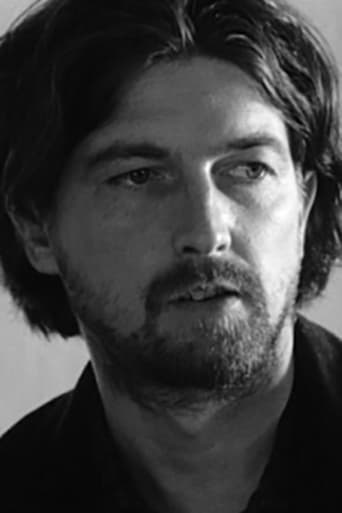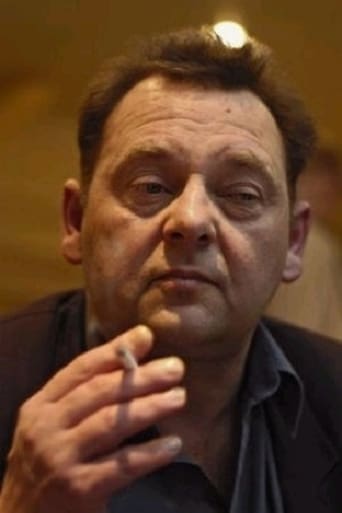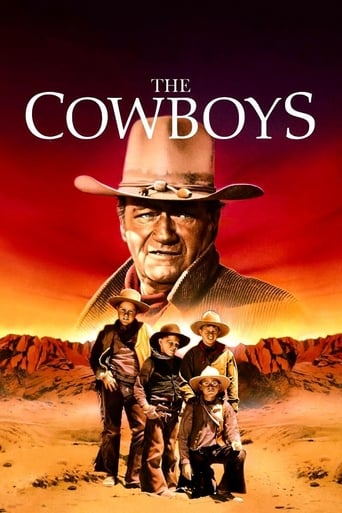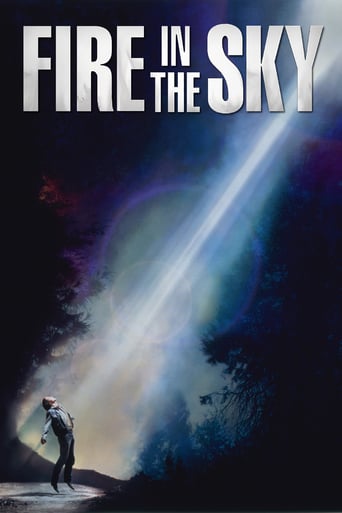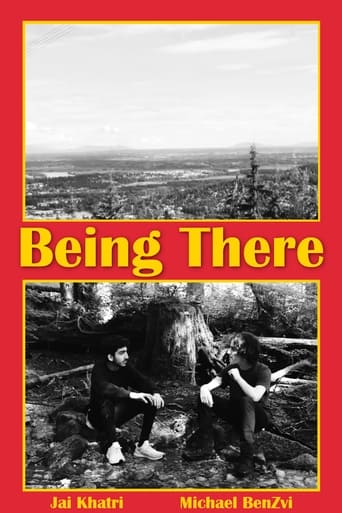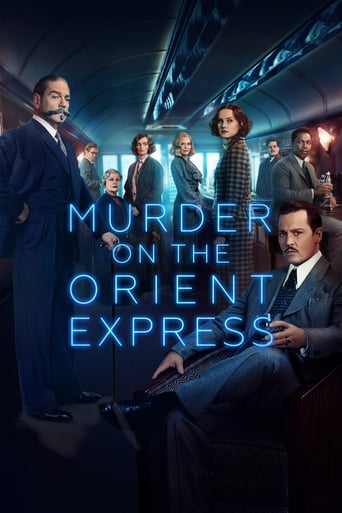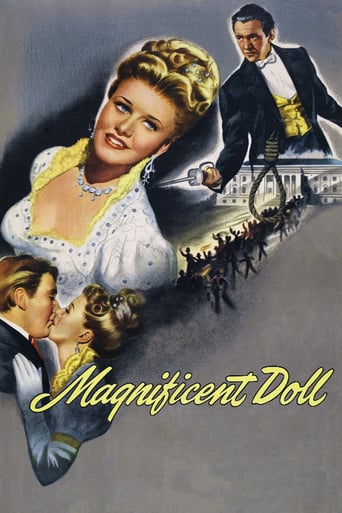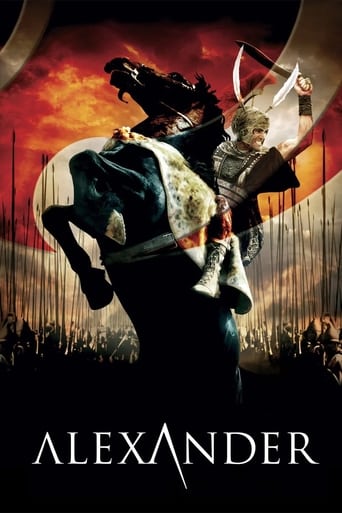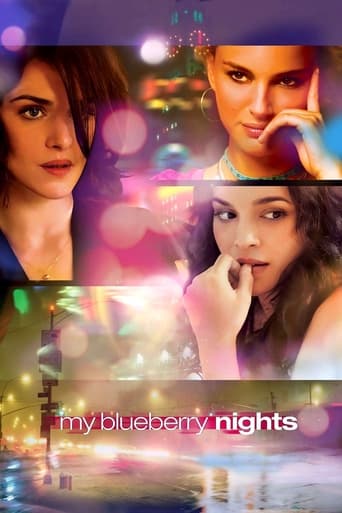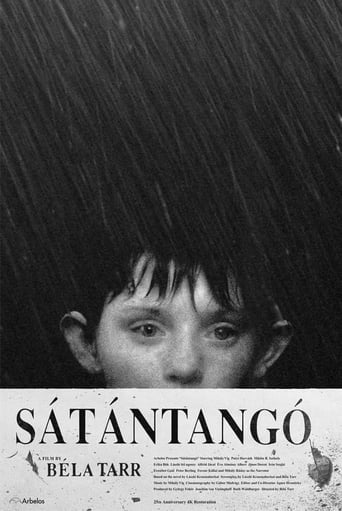
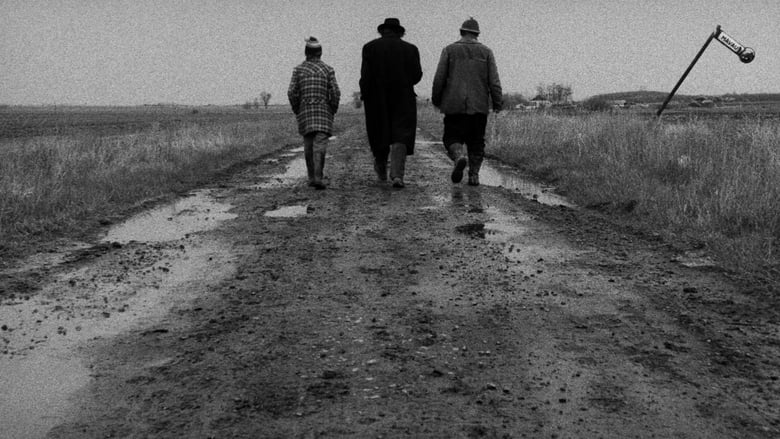
Satantango (1994)
Inhabitants of a small village in Hungary deal with the effects of the fall of Communism. The town's source of revenue, a factory, has closed, and the locals, who include a doctor and three couples, await a cash payment offered in the wake of the shuttering. Irimias, a villager thought to be dead, returns and, unbeknownst to the locals, is a police informant. In a scheme, he persuades the villagers to form a commune with him.
Watch Trailer
Cast


Similar titles
Reviews
Just perfect...
everything you have heard about this movie is true.
A Masterpiece!
Pretty good movie overall. First half was nothing special but it got better as it went along.
What is it, where is it, how will it affect me? A seven hour long documentary-style study of a closely-knit and decadent rural life in Hungary using a group of fictional misfits and an abandoned, isolated machinery plant as the medium. Why? That's really quite an essential question regarding Sátántangó, despite the fact that you might not realise it quite yet. Why did this film happen? As Nick Pinkerton of Village Voice accurately pointed out: its seven hour runtime is unattractive and impractical to prospective viewers, ipso facto the one-screening-a-day bulk structure defies profit motive and its characters, proclaimed 'poor, ugly, sad and damned people' deny expectations of pleasure. So, why? By process of elimination upon pre-viewing research: to make a statement, and after viewing: obsession. Such a transition of outlook opens new avenues for filmmakers and audiences to explore the two most important parameters that structure the medium: space and time. An accomplishment with such calibre is worthy of considerable attention and acclaim. Now everybody is sitting comfortably, I can give Sátántangó my share. Drunken amounts of synergy emerge from the screenplay of this film, which redefines the phrase 'the whole is greater than the sum of its parts'. Its effect is puzzling but as sincerely lifting as the finest of wines. What does spring to mind, of all things, is a young Ludwig Wittgenstein and his theory of 'language games'. In his work, he writes of an attitude towards faith and trust in God, and how those who take part in this 'game' will be able to understand the specific, exclusive language used within it and be rewarded eschatologically (after death). A similar attitude, although sometimes difficult and certainly impractical, if taken toward Sátántangó, yields equal bounty cometh the close of the seven and a half hours of slow, drunkenly beautiful meandering shots and marmite characters both bickering and caring amongst and for each other. Cometh the close, I felt many things: relief, depression, for all I can concentrate: Stockholm Syndrome (after being locked in with a set of the most flamboyant lovable and hateable characters I've ever seen) and scepticism to whether European cinema could ever match the immaculate and painstakingly poured over directing of Sátántangó during my lifetime. To see being invoked within me such a reaction from a single piece of artwork was giddy. It's a film with a stature and a reputation about it, one too leviathan to be shunned, one too long and that requires too much of a commitment to slander for no good reason. Sátántangó, the 1990s golden seal of artistic merit and power amidst claptrap crime spin-offs and rushed all-American 'masterpieces', is something of almighty reward and calibre that sits sentinel and humble in the face of those it will influence and the audience that it shall seduce and accept as one of its own.
I saw Béla Tarr's "Sátántangó" (1994) for the first time in 2005 with a friend of mine, and ever since we've seen it annually on that day with a gathering of friends. Needless to say, it's a wonderful film just as it is a wonderful experience. An utterly gorgeous black-and-white cinematography and use of chiaroscuro, Tarr's brilliant remaining of László Krasznahorkai's novel is like reinventing time in cinematic terms. The first four hours are mystical, energetic, a seemingly never-ending crescendo of expectation and thrill. There the set-up is carefully planned, everything put in place, the environment made familiar to us and a slew of characters waltzed in front of us. Irimiás is our Iagoan, satanic genius, the man behind the arras, and his ghostly presence hovers over the mundane chores of the villagers and everything they do, and don't do.Having seen the film a dozen times, it always fizzles out a bit after Irimiás' brilliant monologue, which is a central showpiece of manipulative power. Then, unfortunately, the release after the four-hour crescendo fails to impress. It lags, seems to lose focus and meander aimlessly, just like its characters. The last thirty minutes, however, regain the film's majestic stamina: in fact, I think the last half an hour is poignant, chilling, and cinema filmed by Tarr, including the best of "Kárhozat" (1988) and the finale of "Werckmeister harmóniák" (2000).Films that are longer than usual often teach us a lot about ourselves as people. I, for one, find this one a lot easier to sit through than Tarr's swan song, "A torinói ló" (2011). "Sátántangó" is humorous just as it is bleak, but there's still life in it that is rekindled, whereas Tarr's last film approaches the heights of "King Lear" as the ultimate portrayal of emptiness.
Goaded on by curiosity, I saw SATANTANGO at the Pacific Film Archive several years ago. Critics gushed that SATANTANGO was without parallel - but two hours into the movie, I was less than impressed. Very little plot. Black and gray photography. Segments that went on seemingly forever, with no clear point. Much of the audience filed out early, and I left early, too. Was the director, Bela Tarr, trying to make the film an endurance contest? More recently, I consulted the Internet Movie Database to see what was written about SATANTANGO. The cumulative rating of 8.5 of 10 was impressive, as were the write-ups. "A stunning experience," says one viewer. "Biggest cinematic experience in history," says another. The kudos go on and on. But if you scroll down the database, you'll also find the negative reviews. "Self- indulgent, annoying," one writer says. One of the more measured responses is, "I do not regret that I saw this movie, but I certainly to not think it was a day well-spent" - after giving the film a 1 of 10 rating. So, I decided to see the film again - this time on DVD - to determine if my initial dismissal at the PFA was warranted. And I learned how to appreciate a different kind of movie - and even come to enjoy it. My hints to a naive viewer:Calibrate your attention span. The individual takes of SATANTANGO are unusually long; the first scene, set outside a pen for steers and chickens, lasts over eight minutes, with no cuts. Just a single tracking shot. This happens through the entire film; in fact, the long takes and slow tracking shots give the film its rhythm and style. If you go into SATANTANGO expecting a film paced to contemporary standards, you'll be disappointed. If you can, take a few breaks between segments - and ask questions.Learn about recent European history. It's possible to enjoy SATANTANGO on its own merits, but understanding recent history helps greatly. The film dramatizes the economic depression that gripped the break-up of the Soviet blok, and things gone very bad, indeed. There's crumbling infrastructure everywhere. People struggle to get by, just barely, by depending on agricultural collectives (like the one depicted in SATANTANGO). This gray, depressing worldview would eventually engulf the region. Structure, structure, structure. The key to appreciating SATANTANGO lies in understanding the film's structure. Another reviewer here aptly mentioned Akira Kurosawa's RASHOMON, wherein the film's narrative is defined by a single event - told in entirely different ways by the main characters. SATANTANGO uses a similar technique; several characters experience the same segment of time from different points of view. The eight-minute "preface" introduces us to the collective itself - where the barebones infrastructure is shown. From here, each segment of the film is separated by an inter-title; when a new segment starts, we see the same action - from a new character's POV. But nearly every segment involves leaving this wet, cold, impoverished piece of hell - or try to exploit it. Dance "the Satantango." The musical segments can open the way to appreciating and even enjoying SATANTANGO. Music is important for Tarr, and the repeating figures of dance are a metaphor. The tango is a repeating dance that abides by the rule, "one step forward, two steps back." It's reflected in the lives of the characters, who take one step forward in their lives, but always end up two steps back. The "chapters" of the film don't move forward like a typical narrative work; it repeats the same segment of time, over and over again. If you're frustrated by the fact that the movie seems static - that's the point. SATANTANGO is a story that can't move forward; it repeats the same familiar song, over and over - until a development determines a new course of action for the characters.I didn't enjoy SATANTANGO when I saw it the first time, but I've since become a fan. The investment of time may seem extreme to some, but it's more than worthwhile.
I saw this film at a Bela Taar festival and I remember it having 3 or 4 breaks because it was so long. But it was worth it. I am constantly remembering the images from this piece, I don't even remember the exact story, but the images, the sequences, were just lovely. If you ever have a chance to see this film projected, take it. Don't worry if you can't sit through the whole thing, just see some of it, you won't forget it. Marvelous long takes, wonderful characters. That first scene with the tracking shot of the cows and the two guys walking down the street with the garbage blowing in the wind around them. Wonderful black and white film. I advise all cat lovers to stay away. Bela Taar is one of the best.


